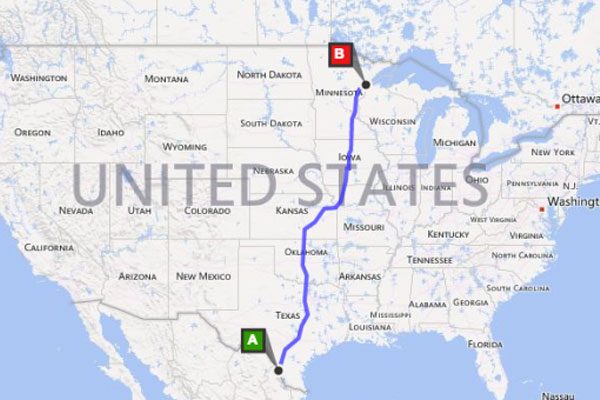That 1,500-mile stretch of road from northern Minnesota to southern Texas is a flyway for monarch butterflies that migrate between Mexico and Canada, and is surrounded by acres of public land that can serve as friendly territory for the bees and butterflies that pollinate the plants that produce much of the nation’s food, such as fruits and vegetables.
But the monarch butterfly has lost population in recent years, which researchers say is due in part to shrinking stands of milkweed, on which butterflies feed and lay eggs. And last year, beekeepers reported losing about 40 percent of honeybee colonies in part due to pesticide use, habitat loss and parasites.
The agreement signed Thursday by officials from Minnesota, Iowa, Missouri, Kansas, Oklahoma and Texas and the federal government is meant to improve the habitat and develop a branding campaign to informally name the interstate the Monarch Highway.

Monarch butterflies have own highway, U.S. government, six states sign agreement to protect habitat. (Image: mexiconewsdaily.com)
The agreement forms what it calls “a cooperative and coordinated effort to establish best practices and promote public awareness of the monarch butterfly and other pollinator conservation.”
“We’ve actually found in Minnesota that restoring prairie along the interstate is not only good for the environment but it helps reduce our maintenance costs,” said Charles Zelle, commissioner of the Minnesota Department of Transportation. Natural prairie grasses and flowers that provide foraging habitat and places to breed, nest and overwinter also don’t have to be mowed as often and help prevent erosion on steep banks, he said.
The transportation agencies will share seed mixes and roadside management practices that promote the best habitats for pollinating insects while making sure the roadside areas are still safe for drivers, Zelle said.
The federal government’s involvement stems from an executive memo issued by President Barack Obama in June 2014 directing agencies to create a federal strategy to promote pollinator health. A task force last year set a goal of restoring or enhancing 7 million acres of land over the next five years through federal actions and public/private partnerships.
Roads have long played a role in food production, initially helping farmers distribute food from farms to markets, Federal Highway Administration spokesman Doug Hecox said Thursday.
“I’d like to think the pollinator thing were doing now is kind of the final chapter in that cycle where we are now officially helping food get produced,” he said.
Monarch butterflies wintering in Mexico declined from an estimated 1 billion in the 1990s to around 33 million by 2014, according to a U.S. Forest Service report released last year. The decline is attributed in part to loss of natural habitat including the milkweed plant in the countryside and deforestation in Mexico and California where they winter.
Honey bee pollination contributes an estimated $15 billion in value to agricultural crops each year, the White House said.
The agreement was signed in Des Moines at a meeting of the American Association of State Highway and Transportation Officials, nonprofit, nonpartisan trade group.
Source: http://www.capitalpress.com/


